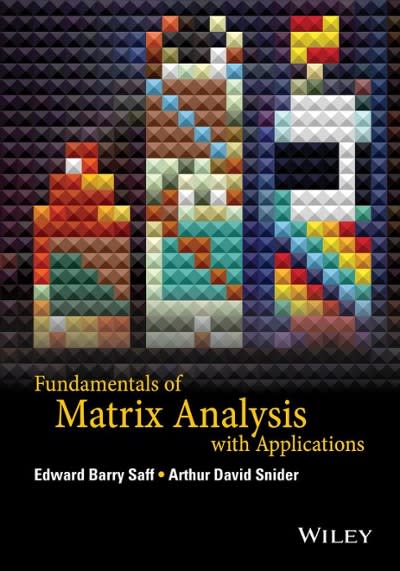Question
An Air Force introductory course in electronics uses a personalized system of instruction whereby each student views a videotaped lecture and then is given a
An Air Force introductory course in electronics uses a personalized system of instruction whereby each student views a videotaped lecture and then is given a programmed instruction text. The students work independently with the text until they have completed the training and passed a test. Of concern is the varying pace at which the students complete this portion of their training program. Some students are able to cover the programmed instruction text relatively quickly, whereas other students work much longer with the text and require additional time to complete the course. The fast students wait until the slowstudents complete the introductory course before the entire group proceeds together with other aspects of their training.
A proposed alternative system involves use of computer-assisted instruction. In this method, all students view the same videotaped lecture and then each is assigned to a computer terminal for further instruction. The computer guides the student, working independently, through the self-training portion of the course.
To compare the proposed and current methods of instruction, an entering class of 122 students was assigned randomly to one of the two methods. One group of 61 students used the current programmed-text method and the other group of 61 students used the proposed computer-assisted method. The time in hours was recorded for each student in the study. The following data are provided in the file namedTraining.
| Course Completion Times (hours) for Current Training Method | ||||||||||
|---|---|---|---|---|---|---|---|---|---|---|
76 | 76 | 77 | 74 | 76 | 74 | 74 | 77 | 72 | 78 | 73 |
78 | 75 | 80 | 79 | 72 | 69 | 79 | 72 | 70 | 70 | 81 |
76 | 78 | 72 | 82 | 72 | 73 | 71 | 70 | 77 | 78 | 73 |
79 | 82 | 65 | 77 | 79 | 73 | 76 | 81 | 69 | 75 | 75 |
77 | 79 | 76 | 78 | 76 | 76 | 73 | 77 | 84 | 74 | 74 |
69 | 79 | 66 | 70 | 74 | 72 |
| Course Completion Times (hours) for Proposed Computer-Assisted Method | ||||||||||
|---|---|---|---|---|---|---|---|---|---|---|
74 | 75 | 77 | 78 | 74 | 80 | 73 | 73 | 78 | 76 | 76 |
74 | 77 | 69 | 76 | 75 | 72 | 75 | 72 | 76 | 72 | 77 |
73 | 77 | 69 | 77 | 75 | 76 | 74 | 77 | 75 | 78 | 72 |
77 | 78 | 78 | 76 | 75 | 76 | 76 | 75 | 76 | 80 | 77 |
76 | 75 | 73 | 77 | 77 | 77 | 79 | 75 | 75 | 72 | 82 |
76 | 76 | 74 | 72 | 78 | 71 |
- Run the F-Test Two-Sample for Variances for the Data File Training (Chapter 11) using the video How to Add Excel's Data Analysis ToolPak(Links to an external site.) for assistance.
In a managerial report,
- Use appropriate descriptive statistics to summarize the training time data for each method. What similarities or differences do you observe from the sample data?
- Conduct a hypothesis test on the difference between the population means for the two methods. Discuss your findings.
- Compute the standard deviation and variance for each training method. Conduct a hypothesis test about the equality of population variances for the two training methods. Discuss your findings.
- Explain what conclusion you can reach about any differences between the two methods. What is your recommendation? Explain.
- Suggest other data or testing that might be desirable before making a final decision on the training program to be used in the future.
Step 3: Discuss:
- What did you find in your analysis of the data? Were there any surprising results? What recommendations would you make based on your findings? Include details from your managerial report to support your recommendations.
Step by Step Solution
There are 3 Steps involved in it
Step: 1

Get Instant Access to Expert-Tailored Solutions
See step-by-step solutions with expert insights and AI powered tools for academic success
Step: 2

Step: 3

Ace Your Homework with AI
Get the answers you need in no time with our AI-driven, step-by-step assistance
Get Started


